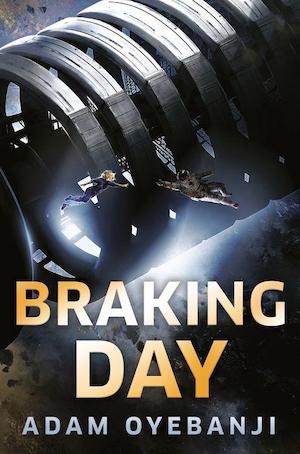“There are more things in Heaven and Earth, Horatio, than are dreamt of in your philosophy.” The good folks at Tor.com love SF writers (well … duh) but they also understand that it is our job to not exactly tell the truth. As I am a distinctly unreliable narrator, I have been sternly warned that if I am claiming to write facts for you lot, I had better have the citations to back them up. Ugh. I write science fiction for a reason.
Well, fine then. That quote is from William Shakespeare’s Hamlet, Act 1, Scene 5. Hamlet wasn’t wrong. There are things out there far stranger than we can possibly imagine. Like what, you might ask. To which my answer is this: I have no freakin’ clue because I can’t possibly imagine it.
Which is where science—“philosophy” in Shakespeare’s day—comes in. Science is always discovering new things, things that no one had thought of before. Sometimes they turn out not to be true, but they invariably have science fiction writers, with our limited human imaginations, scrambling to catch up. From the early days of SF, writers of science fiction have relied on finders of science fact to launch our stories into entirely new directions. You could do this exercise for pretty much any branch of science, but let’s stick with my own personal favorite, outer space.
Back in 1877, the Italian astronomer, Giovanni Schiaparelli, using telescopes that were the best available at the time, observed what, to him, looked like dense, linear formations on the planet Mars that he identified as “canali,” or “channels.” “Canali” however got mistranslated as “canals” and, in 1895, Percival Lowell, the influential American astronomer, published a book arguing that there were canals on Mars and that a struggling Martian civilization was using them to move water from the poles to the rest of that desert world. Science fiction followed Lowell’s lead. In 1898, H.G. Wells produced War of the Worlds, in which envious, highly advanced Martians launch an invasion of Earth from their dying planet. Similar themes can be found in Edgar Rice Burrough’s 1912 pulp classic, A Princess of Mars, which was also the basis for the (in my view) deeply under-appreciated 2012 movie, John Carter. Despite scientists’ protestations to the contrary, SF stories about Martian civilization weren’t fully laid to rest until the Mariner 4 flyby of Mars in 1965.
War of the Worlds was exceedingly vague, of course, about how the Martians reached Earth. In the novel, human telescopes detect huge explosions on the Martian surface and then, several months later, the Martians arrive. The implication at the time was that they must have been launched from incredibly large guns á la Jules Verne’s 1865 novel, From the Earth to the Moon. But the problem with shooting living things into space using a gun is that, if you do the math, the acceleration required would turn everyone into strawberry jam. Rockets, first suggested by the Russian genius, Konstantin Tsiolkovsky, in 1903, are a better way to go.
Despite the objections of the New York Times, opining in 1920 that rockets couldn’t work in space because there would be no air to push against (I can’t even), SF eventually picked up the baton. In the 1933 novel When Worlds Collide by Edwin Balmer and Philip Wylie, humans escape from a doomed planet Earth using “atomic rockets.” By the time we get to Robert Heinlein’s Rocket Ship Galileo in 1947 rockets are pretty much ubiquitous in science fiction and remain so to this day (the propulsion used in my own novel, Braking Day, is also some kind of super-powerful rocket, although I haven’t the faintest idea how it works. Matter-anti-matter? Space pixies?).
Rockets in the real world(s) have also been ubiquitous in the exploration of our solar system. In the 1970s they hurled Voyagers One and Two into their grand tour of the outer planets, including Jupiter and its moons. Not long thereafter, having examined the photographs, scientists started suggesting that Jupiter’s moon, Europa, might harbor a vast underground ocean, something no one in SF had previously imagined.
But, yet again, when science finds something new, SF scurries along after to make use of it. Europa’s underground ocean features in Arthur C. Clarke’s 2010: Odyssey Two, written in 1982 and, more centrally, in the low budget but geekily entertaining movie, Europa Report, released in 2013. And now, to bring matters more or less up to date, we have the discovery of seven Earth-sized planets orbiting the red dwarf designated 2MASS J23062928–0502285 in the constellation of Aquarius. The address is a bit of a mouthful, I know, but, fortunately for us, we can now refer to it as TRAPPIST-1 .
Buy the Book


Braking Day
In 2016 and 2017, observations with numerous space- and ground-based telescopes, including the Transiting Planets and Planetesimals Small Telescope (TRAPPIST) telescope at La Silla Observatory, Chile, led to the discovery of initially three, then seven terrestrial planets around the star. The planets are all incredibly close in—if you stood on the night side of TRAPPIST-1b, the innermost world, the other six planets would be clearly visible, and the nearest, 1c, would appear larger than our moon. Even more exciting, of the seven planets in orbit, three are believed to lie within the star’s so-called habitable zone, where the temperature is conducive to the existence of liquid water. Imagine, three habitable worlds whizzing by each other at close quarters every few days!
Interestingly, though, so far as I’m aware, no one did imagine such a thing. Locked into our single solar system, with its single habitable world and the outer marches patrolled by gas and ice giants, how could we? I’ve read SF books with reference to systems with, say, two human-habitable worlds. Sometimes even in our own solar system. In Paul Capon’s The Other Side of the Sun, for instance, first published in 1950, there is a “counter-Earth” sharing the same orbit as our own planet but forever hidden on—wait for it—the other side of the sun. But three or four such planets? Around a red dwarf? Never! The solar systems science has discovered so far look nothing like our own, and TRAPPIST-1 is no exception . But, once science opens the door, science fiction barges its way in without so much a by-your-leave.
Enter Fortuna, by Kristyn Merbeth, published in 2018, and the first in a trilogy dealing with smuggling, crime, and alien artifacts in a system containing no less than five human-inhabited planets, none of which seems prepared to get on with any of the others. I know fiction thrives on conflict, but five planets at daggers drawn is next level. And all triggered, as Merbeth herself explains at the end of the book, by the TRAPPIST-1 discovery.
Science, which doesn’t rely on the human imagination to unearth weird sh— er, stuff, is truly stranger than science fiction. And long may that continue. I can’t wait to find out what comes next. And to read the stories that come out of it.
Of Scottish and Nigerian descent, Adam Oyebanji is an escapee from Birmingham University and Harvard Law School. He currently lives in Pittsburgh, PA with a wife, child, and two embarrassingly large dogs. When he’s not out among the stars, Adam works in the field of counter-terrorist financing: helping banks choke off the money supply that builds weapons of mass destruction, narcotics empires, and human trafficking networks. Braking Day is his first novel.










